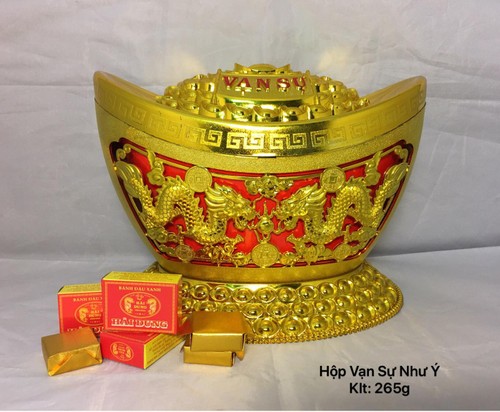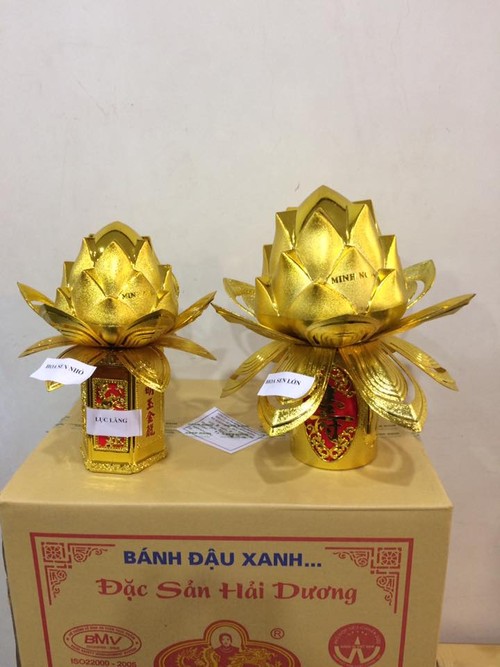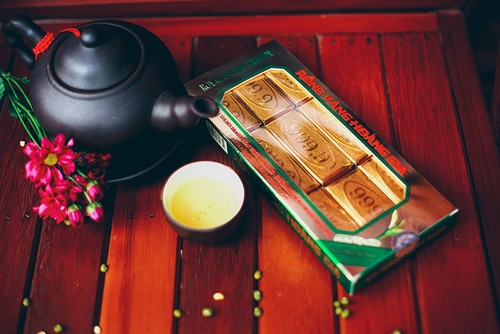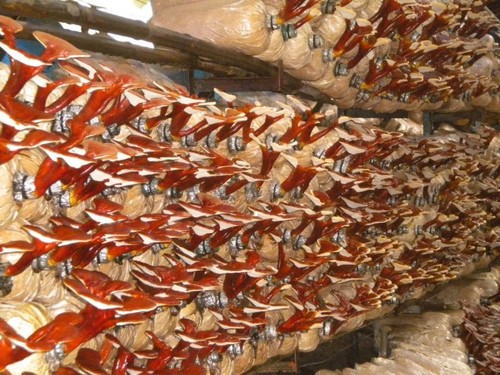B: Our Bangladeshi listeners told us that Bengali New Year begins officially at dawn and many businesses begin their day by clearing their old ledgers and beginning new ones. The day is observed with processions, singing, and fairs. In large cities, the festival begins with people gathering under a large tree or along the bank of a river to watch the sunrise.
A: They pay tribute to Ganesha and Lakshmi, deities of auspicious beginnings, prosperity, and wealth. Many people visit nearby rivers for ritual baths and prayers. People love to wear garlands of red oleanders, daisies, roses, hibiscuses, marigolds and other flowers. Music, dance performances, fairs, and processions are an integral part of the festivities.
B: This week we received several reception reports from Harald Suss of Austria. It’s been a long time since we last heard from him. We searched our database and found our last correspondence was in April, 2017.
A: We’re always glad to welcome old listeners back. Herald tuned in to our program on 7315khz on March 8 using a Tecsun S2000 receiver. A QSL card will be sent to you soon, Mr. Suss.
B: I’m reading an email from Eddy Prabowo of Indonesia. He listened to VOV on April 13th on 7315khz via the World Harvest Radio International. Eddy said he logged in to our channel via WebSDR in Washington, DC, and monitored from Jakarta using an Android smartphone. His SINPO rating was all 4s. He noted minor noise splatter, minor Morse code sounds, and minor fading.
A: Thank you, Eddy. Your notes will be forwarded to our technicians. We hope to receive more detailed observations from you.
B: Abid Hussain Sajid, a Pakistani DXer, told us: “I am very busy with office work. But I listen to your program regularly to get information about Vietnam and the world. Through Voice of Vietnam, I enjoy the life other countries. Reception is good.”
A: We’re very glad to hear that. Thank you for supporting VOV. Your reception report for the April 11th program on 7220khz matched our station log. We listened to the audio recording you sent us with pleasure because the signal was so good. We’ll send you a QSL card to confirm your report.
B: Visitors to our website at vovworld.vn have submitted a number of comments and questions. We already gave brief answers on the website. Now we have fuller answers to some of your questions. Someone named Robin read our story about green bean cakes and asked us, “How can I buy green bean cakes in France?”
 Green bean cakes are packed in box with a message "May all your wishes come true". Green bean cakes are packed in box with a message "May all your wishes come true".
|
A: Vietnamese green bean cakes have been exported to China, Japan, and other Asian countries.
B: Perhaps you might find them at a Vietnamese shop or restaurant. Since we don’t know where you live in France, we’ll assume you’re in Paris and can buy some in Chinatown – a large, bustling area near the “Triangle de Choisy” accessible by metro. This is definitely the biggest of the Asian quarters in Paris. This area is home to the largest Asian supermarket in the city as well as dozens of smaller markets and fantastic restaurants.
 Green bean cakes in lotus-shaped boxes are favorite worship offering. Green bean cakes in lotus-shaped boxes are favorite worship offering.
|
A: The recipe for green bean cake is not complicated. The ingredients include green bean powder, sugar, fat or vegetable oil, and coconut milk, but each craft family has a secret way to create a unique taste.
B: We have been told that green bean cake is one of the items most in demand among overseas Vietnamese. Its taste kindles nostalgia for the homeland. Bảo Hiên Golden Dragon brand green bean cake of Hai Duong province is popular nationwide. Green bean cakes are made elsewhere, but many people swear by the ones made in Hải Dương.
 Green bean cakes are served with hot green tea. Green bean cakes are served with hot green tea.
|
A: If you have Vietnamese friends, ask them about green bean cakes. If you’re lucky, they’ll give you some. Vietnamese people often send green bean cakes to their relatives abroad.
B: Bipin Badoni of India commented on our website that he found our story about growing mushrooms in Vietnam inspiring. He grows mushroom in India and wants to learn more about Vietnamese mushroom varieties.
A: Vietnam has lots of by-products useful for growing mushrooms – abundant waste from growing rice and sugarcane, and lots of wood sawdust. The tropical weather with high humidity is perfect for mushrooms.
 Ling-zhi production in Quang Ninh province. Ling-zhi production in Quang Ninh province. |
B: In Vietnam, the demand for mushrooms as food or medicine has been increasing rapidly. Mushrooms commonly used in Vietnamese dishes are straw mushroom, oyster mushroom, shiitake mushroom, snow fungus, enokitake mushroom, and wood ear fungus. Both fresh and dried mushrooms are plentiful. Fresh mushrooms must be peeled, cleaned, and soaked in salt water before cooking. Dried mushroom must be soaked in warm water until soft and then peeled and drained well.
A: The rare Ling-zhi and monkey-headed mushrooms are used as medicine. Traditional methods of growing mushrooms result in low productivity. Now advanced techniques for mushroom cultivation are being acquired abroad and applied in Vietnam.
B: Associate Prof. Nguyen Thi Chinh was among the first to introduce foreign varieties of mushrooms to Vietnam. She is affectionately called the “Mushroom Queen” by colleagues and mushroom farmers.
A: Although she has successfully cultivated many varieties of mushrooms for food and medicine, Chinh concentrates on Ling-zhi mushrooms because of their high quality and profitability. She has established a company that specialises in producing the Ling-zhi mushroom, which is widely known for its effectiveness treating high blood pressure, diabetes, hepatitis B, and cancer.
B: Some localities and enterprises are developing high-tech mushroom farming. For example, wireless sensor networks and drip irrigation are being used by the Center for Plant Biotechnology of the Institute of Agricultural Genetics for industrial scale production.
A: The Institute has been studying the use of ultraviolet radiation to preserve nutritional content. Further study is needed before transferring the technology to farmers.
B: Thanks to all listeners for tuning in to VOV. We’ll send you QSL cards to confirm your reports. We welcome your feedback at English Service, VOVWorld, Voice of Vietnam, 45 Ba Trieu Street, Hanoi, Vietnam. Our email address is englishsection@vov.org.vn. Thank you for listening to VOV on shortwave and following us online. Goodbye until next time.